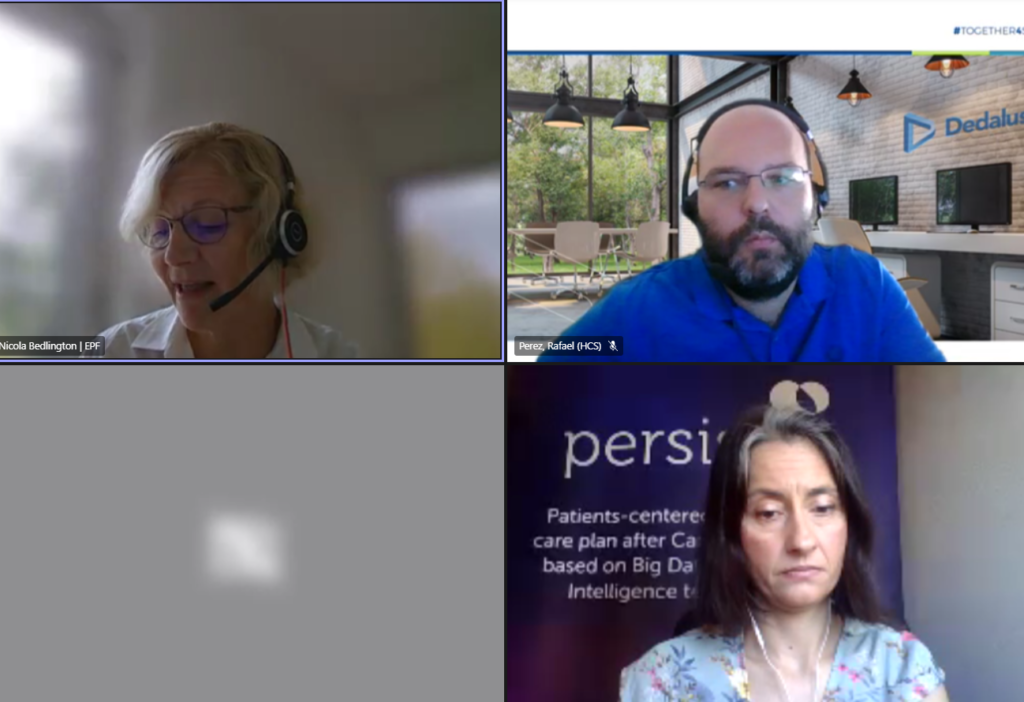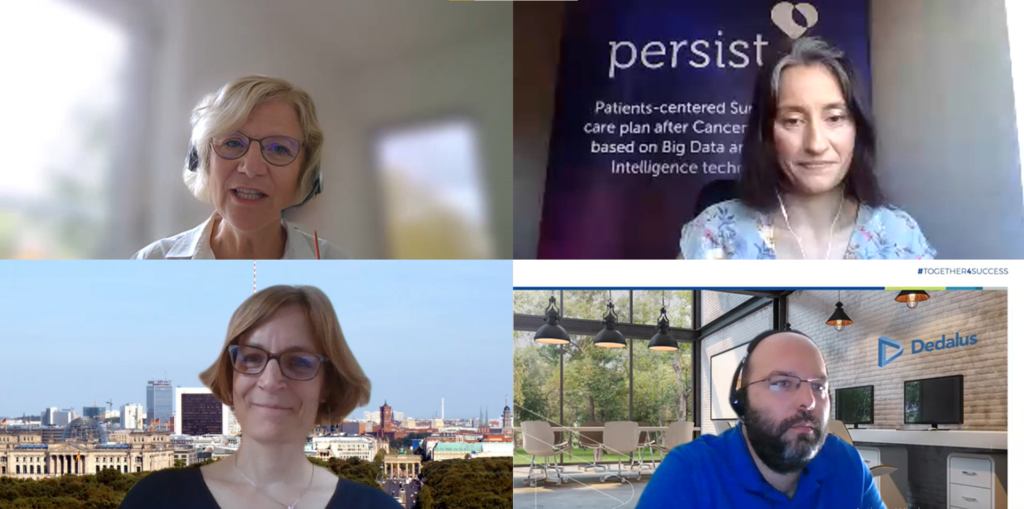
A Look Beyond Europe’s Beating Cancer Plan
By 2030 more than 3 million lives saved, living longer and better
The PERSIST consortium held an online event on June 30th, 2021, to discuss and inform a wide range of stakeholders, regarding technical and medical aspects of the project, along with how it fits with the expectations expressed, both by Europe’s Cancer Beating Plan and the future development of projects under the Horizon 2020 framework. Under the skilled moderation of Nicola Bedlington – a special advisor to the European Patients’ Forum – members of the consortium presented general information about the project, its technical characteristics and operability, developed from challenge to innovation and the clinical study, which reveals the added value of the project to clinicians and the patient centered aspect of the project.
Annika Nowak, a Policy Officer from DG “Research and Innovation” to the European Commission, presented the basics of Europe’s Beating Cancer Plan and its four pillars: (1) prevention; (2) early detection; (3) diagnosis and treatment; and (4) quality of life of cancer patients and survivors. She also paid attention to the proposed Mission on Cancer – one of the five missions under Horizon Europe Research and innovation Programme. “By 2030, more than 3 million lives saved, living longer and better” is the overall goal of the initiative, which aims to ensure equitable access in cancer’s prevention, diagnostics and treatment, as well as to work towards support and better quality of life. Annika Nowak stressed upon the importance of initiatives aiming at the smooth transition and returning to work for cancer survivors, as well as at family members’ support for cancer patients – both being part of the project PERSIST’s mission.
“One of the most innovative features of PERSIST is the creation of patients’ engagement mobile application, collecting data from the patients that has not been actively collected before and including data on patient’s own perception.”, said Rafael Perez from Dedalus, during his presentation of PERSIST technical characteristics. “We are always following a patient-centered approach, we need to provide care individualized as much as possible”. Rafael also pointed out on what PERSIST will offer to clinicians – predicted patients’ trajectories, which will help to provide them with targeted and individualized decisions.
Dina Bema from the Institute of Clinical and Preventive Medicine of the University of Latvia explained how the clinical part of PERSIST addresses the unmet needs of cancer patients after their respective treatment. While presenting the current standing of PERSIST multicentre clinical trial and functionalities of the mHeath application, she emphasized that the project could empower patients as the technology could also be used to help find the trustful and useful information for each patient. “We are also bringing generations closer together as the participants in our clinical trial sometimes involve their children or grandchildren in order to help them with the technology”, Dina said.
The project coordinator Victoria Cal from GRADIANT, who made a general overview of PERSIST, also explained that in order to keep the patients at the center of attention, the project started with a survey to check how the patients feel, allowing traceability for their unmet needs. “During the clinical study, our goal is to check that what we are doing is indeed what they need.” She gave some examples, on how technologies can address the unmet needs of cancer survivors, but emphasized that what makes PERSIST different and unique is that it also aims at addressing psychological issues.
During the event, a special video statement from MEP Tomislav Sokol (member of the Special Committee on Beating Cancer – BECA) was presented to the audience. In his address to all attendees, he underlined the following: “It’s important to consolidate and secure a health data sharing infrastructure… Further, increase efficacy in cancer treatment and follow-up by providing prediction from Big data that will support decision making and contribute to optimal treatment decisions and the health status of survivors.”



